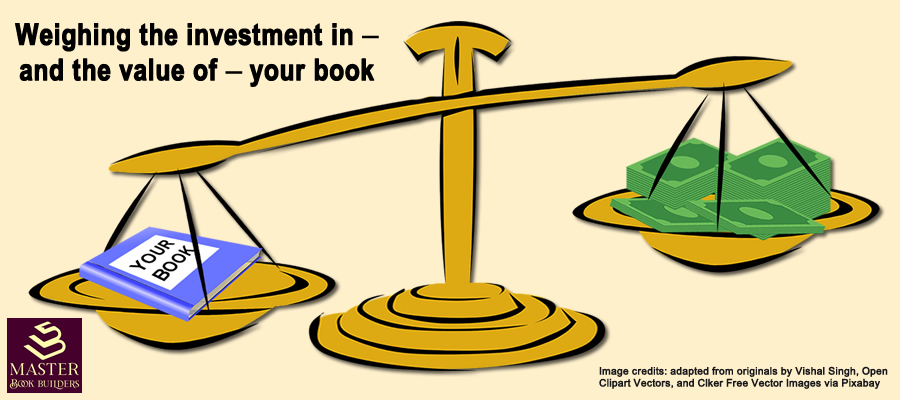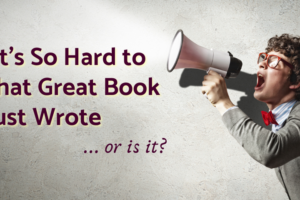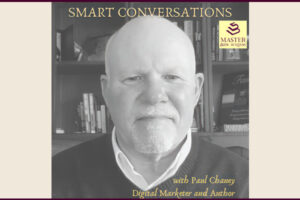Weighing the investment in your book: Indie, Hybrid, or Traditional Publishing
This edition of Tips from Tom’s inbox flows from the questions we get all the time in emails, calls, and in-person, in two basic flavors:
- “How much does it cost to get my book published?” And,
- “Why does it cost so much to publish?”
As you might guess, the answers to such questions depend on what kind of book, what kind of quality, and what kind of publishing you’re talking about.
Here, I’m going to focus on non-fiction, business-related books, that are written, edited, designed, and produced at a professional level of quality, and published for distribution through Amazon and other retail outlets. The connection to the author’s business/professional goals is why you’ll notice I will use the term investment, for the most part, rather than cost.
The purposes for publishing this kind of book go beyond any income from sales, which will often be small for a first time author. The book should be far more valuable as a marketing tool for the author’s existing business, and for generating new revenue streams through paid speaking, teaching, coaching, and other roles.
But be aware that most of the book quality elements that drive the cost of getting published apply to fiction, memoirs, children’s books, and so on, as well.
Years ago, Yvonne and I acted as agents on two traditional publishing book deals and another that never found a publisher. What we learned reinforced our passion for helping authors who make the entrepreneurial choice to go the “indie publishing” route. Here are some of the reasons relating to the investment question.
Traditional Publishing: investing on both ends
The investments an author must make to get a traditional publishing deal fall into three categories: time, ownership and control, and money. The time spent writing the book won’t change much across publishing methods. But the additional time needed to find an agent willing to represent the book and then for them to succeed in finding a publisher will be months, if not years. And after you’ve delivered your manuscript, traditional publishers often take another year or more to get your book published and on sale.
Delay in getting your book into the hands of your market means lost opportunities for speaking, workshops, and new business.
Then there’s the loss of ownership and control of your book. Traditional publishing contracts grant the publishing house exclusive rights over creative decisions, along with the right to publish and sell your book (or change their mind along the way and not publish it). If the publisher did decide not to publish, or not to keep the book in print after the first run, as many authors have discovered, they’ve lost the right to publish altogether (unless they negotiated a strong “reversion” clause into the contract).
You’re investing your rights to everything from the title, to cover design, to interior layout, and even editorial decisions. Choices of formats to print and produce for e-readers or audio devices belong the publisher (unless you have enough clout to negotiate keeping some of them). Same for foreign language, film rights, and derivative works.
When your book is intended to establish your expertise, credibility, and thought leadership in your field, giving away that much control is a substantial investment.
Finally, there’s the money investment. This one’s kind of sneaky, because everyone thinks about the upfront money – the “advance” – that the publisher pays the author. That can come even before you’ve invested your time in writing the book itself, if your agent can land a deal on the strength of a proposal summarizing the book’s content and your plans to market it. (Oh yes, the publishers insist that you lay out a compelling case for your ability to sell lots of copies.)
But most people overlook the back end cost. Essentially, you’re betting against yourself and your book.
Let’s run some numbers, using the assumption that your book will be highly successful and comparing what that would mean if you go traditional vs. indie publshing. To keep it simple, we’ll focus on a 200 page print book here.
| Traditional publishing – A first time author might command a $10,000 advance, with a promise of a 7% royalty. If you sell 5,000 copies at a $25 cover price, that would generate $125,000 for the publisher. Your royalty share would be $8,750 (ignoring whether the contract allows the publisher to subtract some of its costs, retain a reserve against returns, and other fun facts about how they operate). But, because your sales have not generated enough royalties to cover the advance, you end up with no additional money, just the original $10,000. | Indie publishing – You invest, say, $20,000 upfront by hiring a team to help you write, edit, design, publish, and market your book. (You’ll see why this could be a low estimate in the hybrid model later.) If you and your team sell the same 5,000 copies at a $25 price, you’d generate the same $125,000 gross. Using Amazon’s KDP royalty calculator, you’d receive a roughly 47% royalty share, or $58,750.Subtracting your upfront investment of $20,000, that would leave you a profit of $38,750. |
Yes, selling 5,000 copies is a rare occurrence for a new author – in either model – and we use it here only to illustrate the point about the significant difference in royalties.
Comparing the different results in our example, the traditionally published author suffers a $28,750 “lost opportunity” cost – or what I call a back end investment. The publisher gets to keep that extra share of the revenue from your book. So you effectively invested substantially more on the back end with a publisher, than you would have invested up front in our indie example.
To drive home the point, at a 7% royalty, the traditionally publised author earns $1.75 per copy (even if it’s calculated on the full cover price). The indie author gets $11.75 per copy (assuming Amazon is selling at the list price).
The more copies you sell, the worse the gap in total income will become.
Hybrid Publishing: “your results may vary”
There’s no legal definition of a hybrid publisher, but as the term implies, these companies lie somewhere in between traditional publishers and independent authors publishing their own books. The main criteria is that a hybrid publisher charges the author a fee upfront, instead of paying an advance. A quick search today showed these fees estimated to run anywhere from $2,500 to $30,000.
After the upfront investment, hybrid publishers operate similarly to traditional publishers, and indeed, some traditional publishers have imprints that are hybrids. Most do pay a somewhat higher royalty rate than traditional publishers, though not in the same league as the indie model.
We know there are quality hybrid publishers out there, doing their best to produce the kind of work expected. But we’ve lived some horror stories with our clients, too.
We’ve had authors come to us after paying thousands to a hybrid, unhappy with the quality of their published book or the marketing support provided. In two cases, the hybrid contract had provisions that allowed the author to switch to the indie model. In others, they’d sold most of their rights and were stuck with the hybrid for their existing book.
That’s what I mean by this model being a crapshoot. You pay upfront, but get many of the downsides of the traditional model, with less confidence that your book will become a quality product or get the marketing support it needs.
In the two cases where we could help, authors JK Barnes and Michael Coleman had us redesign their covers and revise the content to the point where their books got new ISBNs and relaunched to Amazon #1 rankings.

Full disclosure: Nearly 20 years ago, we started our first publishing company and used a hybrid model. We like to think we provided high quality work and several of our clients published multiple books with us to support that belief. That was before Amazon KDP and similar platforms existed.
Then a different opportunity appeared (BlogPaws), which required more and more of our time, eventually forcing us to leave the book publishing world for several years. When we both “retired” from BlogPaws, we found ourselves drawn back into a book publishing world that had changed dramatically.
With platforms like KDP or IngramSpark (read how we compared them and why we chose KDP), we saw authors now fully empowered to independently publish books of equal quality to any traditional publisher, let alone the hybrids. They could achieve that level of qualtity by creating their own teams to support them on the writing, publishing, and marketing tasks that they lack the lack the skills or desire to perform.
We tested the theory in 2019, publishing Tom’s book, Read ‘Em & Reap, and again in 2020, with our co-authored book, The How to Write a Book Book – “eating our own cooking” as the saying goes.
Then we started offering to help others do the same.
Indie Publishing: keeping full control
We’ve done enough comparison already for you to know why we think indie is the best route for authors to follow on their journey to getting their book published.
But we don’t want to give the impression that we think taking that route will be easy. Neither of the other options are easy, either.
We have a Book Building checklist that includes 27 items or tasks – many with multiple sub-parts – for completing, designing, publishing, and marketing your book. The checklist includes these graphics that summarize the list further, to give you the idea of how much work is required.

And these images don’t even touch on the marketing and promotion work that must be done, ideally starting before you even begin writing! Don’t delude yourself that you can find a publisher or hybrid to handle all of the marketing and sales work. They expect you to participate fully in those efforts.
All this should give you an clearer understanding of why the answers to those cost or investment questions we started with end up being . . . quite a lot.
We tell our authors that in publishing a book they are starting a business. That picture helps to understand why they need things like a website and a domain name dedicated to their writing, their own block of ISBN numbers, and a marketing plan for their book(s). A web designer and a marketing team will cost several thousand dollars each.
For the writing itself, we hope you know you’ll need a professional editor or book coach to produce the quality book we’re talking about. A good developmental editor or book coach will run you more than ten thousand dollars.
A good book cover designer (and they must know book covers, not just design) will run you hundreds, perhaps as much as $2,000. Interior book design is another specialty that you should be ready to invest around those same amounts in, if you’re buying all these services a la carte.
Adding just these pieces up, you can see why I chose $20,000 as a ballpark number for the investment in a quality book.
You can find many of these services packaged up by large companies. According to some sources, Forbes has a package that can include ghost writing and a global marketing team that costs from $125,000 to $250,000! Though they call it “independent” the Forbes offerings seem to put you back in the hybrid model. If you’re a Fortune 500 CEO – or want to sell your services to them – and have that much cash laying around, that investment might even make sense.
In our work with authors, we create a custom “book building” package that leverages Yvonne’s skills in book coaching and developmental editing, business and marketing advice, and her network of publishing industry contacts, combined with Tom’s book design, cover design, and web design experience and his legal background. We don’t offer every skill you will need, but we have many – and have a resource list of experts to connect you with for the tasks we don’t do.
We don’t become your publisher. We help you become your own publisher. We can even guide you to set up your own “publishing house” as an LLC and create your “imprint” to own the ISBN numbers, so that your book will be very hard to distinquish from any other publisher’s product.
That’s how we think the Indie Publishing model should work.
As Yvonne likes to say, becoming “the author of” makes the investment well worth it!






7 Comments
Leave your reply.